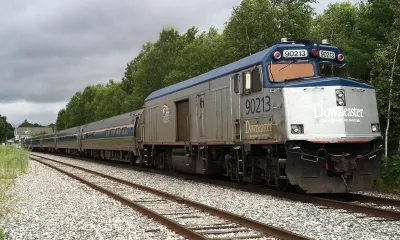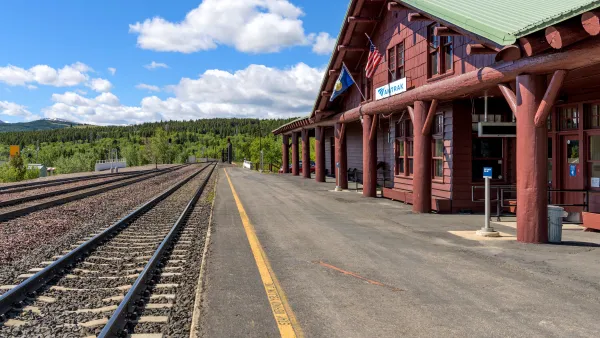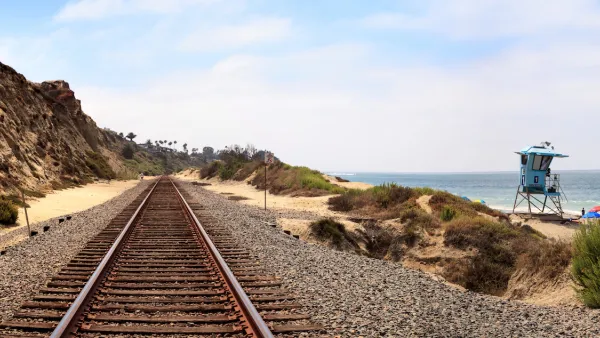As Amtrak gears up to plan expansion projects supported by new federal funding, states can take some advocacy lessons from Maine's popular Downeaster train.

Jake Blumgart describes "one of the most successful state-backed services in America’s passenger rail system" and evaluates how similar efforts could succeed in other states. Maine's Downeaster, which opened in 2001 after a decades-long campaign by the advocacy group TrainRiders Northeast, saw consistent ridership growth before the pandemic—and "[e]ven with ridership still reduced, in October the Downeaster was back to 68 percent of its passenger load of that same month in 2019."
The train has brought significant economic benefits and reduced congestion in communities that previously had little or no access to public transit. "The economic value of the Downeaster can be measured in 100,000 out-of-towners from 'down South' who arrive in the state without clogging the roadways, bringing an estimated $29 million in tourism revenue every year (pre-COVID-19)."
With Amtrak set to receive increased federal funding, advocates say states shouldn't assume they'll be part of expansion plans, but make an assertive case for their rail proposals. As Blumgart writes, "Maine may have been the first state to go to Amtrak with a proposed rail expansion — as opposed to a federal agency courting local lawmakers — but many others have done so since." Jim Mathews, president and CEO of the Rail Passengers Association, warns that launching new train services will be more challenging in today's "vituperative slash-and-burn atmosphere," but the Downeaster offers some useful lessons on how to push train projects forward.
FULL STORY: Maine Loves Its Train. Can Other States Follow in Its Tracks?

National Parks Layoffs Will Cause Communities to Lose Billions
Thousands of essential park workers were laid off this week, just before the busy spring break season.

Retro-silient?: America’s First “Eco-burb,” The Woodlands Turns 50
A master-planned community north of Houston offers lessons on green infrastructure and resilient design, but falls short of its founder’s lofty affordability and walkability goals.

Delivering for America Plan Will Downgrade Mail Service in at Least 49.5 Percent of Zip Codes
Republican and Democrat lawmakers criticize the plan for its disproportionate negative impact on rural communities.

Test News Post 1
This is a summary

Test News Headline 46
Test for the image on the front page.

Balancing Bombs and Butterflies: How the National Guard Protects a Rare Species
The National Guard at Fort Indiantown Gap uses GIS technology and land management strategies to balance military training with conservation efforts, ensuring the survival of the rare eastern regal fritillary butterfly.
Urban Design for Planners 1: Software Tools
This six-course series explores essential urban design concepts using open source software and equips planners with the tools they need to participate fully in the urban design process.
Planning for Universal Design
Learn the tools for implementing Universal Design in planning regulations.
EMC Planning Group, Inc.
Planetizen
Planetizen
Mpact (formerly Rail~Volution)
Great Falls Development Authority, Inc.
HUDs Office of Policy Development and Research
NYU Wagner Graduate School of Public Service





























